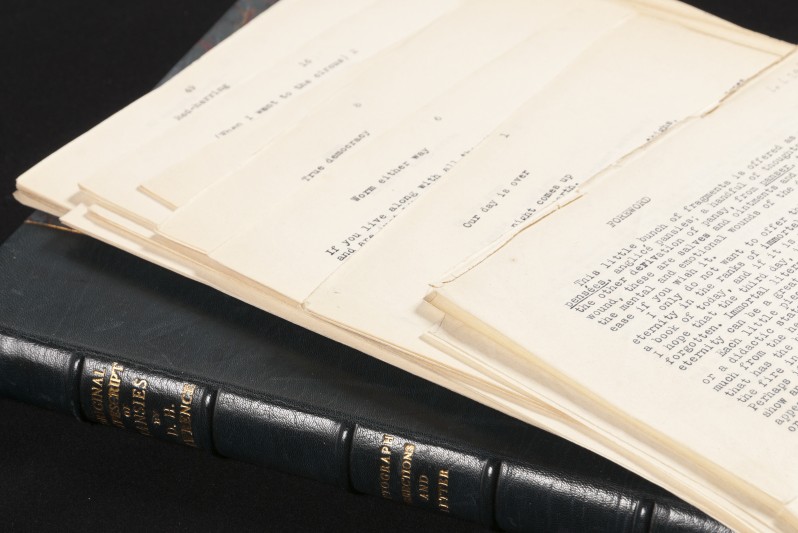This was the last book of poems Lawrence saw published in his lifetime. The typescript sheds further light on Lawrence’s battle with the British censors in the wake of the controversy surrounding the private printing and postal distribution of Lady Chatterley’s Lover in 1928. The acquisition has been generously supported by the Friends of the National Libraries and the Arts Council England/Victoria and Albert Museum Purchase grant fund.
During the second half of 1928 Lady Chatterley’s Lover attracted the attention of the British Home Secretary, Sir William Joynson-Hicks (popularly known as “Jix”). Postal workers, acting under instruction from Scotland Yard and the Home Office, intercepted the odd copy of the novel being sent into Britain from Florence (where it was printed), and in January 1929 they at last came upon a whole parcel of them. A few days later, they opened another parcel which Lawrence had sent by registered post to the London office of his literary agent, Curtis Brown. This parcel contained two typescripts of the collection of poems entitled Pansies. The typescripts were confiscated on the grounds of indecency.
Lawrence was outraged by the seizure of his typescripts, not least because postal workers were only authorized to make checks on the open mail, not on registered items. In 1929 Home Office censorship of a typescript sent by registered post from an author to his agent raised wider legal and literary controversy than did postal interception of copies of Lady Chatterley’s Lover.
While the British press debated free speech and the violation of His Majesty’s mail, Lawrence used the copy of Pansies still in his possession to produce enlarged typescripts of Pansies. In Paris he entrusted one of the enlarged typescripts to a sympathetic friend, the Welsh novelist Rhys Davies who smuggled the illicit typescript through English customs. While Joynson-Hicks fumed in the Commons about the 'grossly indecent' shorter typescript of Pansies, he was being wrong-footed by Lawrence and an anarchist bookseller, Charles Lahr. Martin Secker in London, and Alfred A. Knopf in New York, dared publish no more than expurgated editions of Pansies, in July and September 1929 respectively. With Davies’ and Lahr’s help, Lawrence had an enlarged and unexpurgated Pansies privately published in August 1929. It was published and distributed in London, under the Home Secretary’s nose.
Lawrence was forced to re-type Pansies as a precaution against having the enlarged typescripts confiscated. The recently-discovered typescript is a previously-unknown typing with corrections in Lawrence’s hand; it proves that Lawrence typed Pansies no fewer than four times. Dr Andrew Harrison, Assistant Professor in English Literature and Director of the D. H. Lawrence Research Centre at the University of Nottingham, says, 'It is astonishing that the consumptive Lawrence, who hated the mechanical business of typing, could summon the energy to re-type his longest book of poems so often, barely twelve months before his death. But he was wholly committed to striking back at Jix, and to fighting censorship’.
